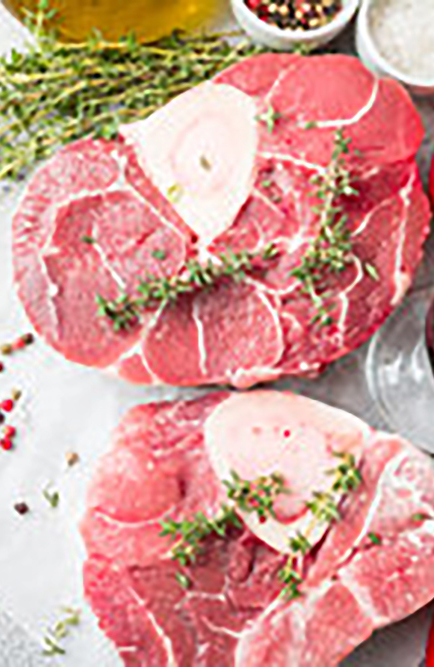CANADIAN BEEF GRADING AGENCY
VEAL GRADING
THE CANADIAN VEAL GRADING PROGRAM
Youthful bovine carcasses, weighing less than 190 kilograms (hide off), are classified as veal within the Canadian beef grading program. Veal carcasses are graded for quality on the basis of meat colour, overall muscling, and fat cover.
Veal carcasses with at least good muscling and some creamy white fat are graded CANADA A. Those with low to medium muscling and an excess of fat cover are graded CANADA B.
Veal carcasses failing to meet the requirements of CANADA B are graded CANADA C.
All veal carcasses are then graded for meat colour. The veal grader uses a colour meter to do this. The carcasses are assigned a numerical value based on the objective measurement of meat colour.
Veal carcasses are segregated into four colour classifications, based on these meter reading values. The bright pink or lighter colour range is given a grade of 1. As meat colour becomes more pink or red, grades of 2, 3, and 4 are assigned. This scientific method of assessing meat colour is being continually refined. Research is now underway to develop a meat probe that will directly measure the level of meat pigment, which is the base of all colour analysis. Should this method of colour determination be judged superior to the current methods, this new technology will be adopted.
As indicated in the above analysis, the top quality of Canadian veal is produced from carcasses grading A1. As muscle and back fat quality decreases, muscling scores will move to B and then C. As meat colour becomes more intensely pink or red, the colour scores will move to 2, 3, or 4. The lowest quality of Canadian veal is therefore produced from carcasses grading C2. This process of muscle and colour grading ensures that purchasers of Canadian veal can specify their exact quality requirements.

REQUIRED GRADING FACTORS


